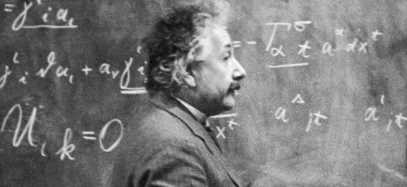Albert Einstein, one of the greatest scientific minds in history, revolutionized our understanding of the universe with his theory of relativity. Published in 1915, this groundbreaking theory fundamentally transformed our perception of space, time, and gravity. In this blog post, we will explore Einstein's theory of relativity, its key concepts, and its profound impact on modern physics and our understanding of the cosmos.
Space, Time, and the Principle of Relativity
At the heart of Einstein's theory of relativity lies the notion that space and time are not separate entities but are interconnected as a four-dimensional fabric known as spacetime. According to the theory, the laws of physics should be the same for all observers in uniform motion. This principle of relativity challenges our intuitive understanding of absolute space and time.
Special Relativity: The Speed of Light and Time Dilation
Einstein's special theory of relativity, published in 1905, introduced the concept of the constancy of the speed of light in a vacuum. According to this theory, the speed of light is the ultimate cosmic speed limit, and nothing can travel faster. This principle has far-reaching implications for our understanding of time.
Special relativity also predicts a phenomenon known as time dilation, where time slows down for objects in motion relative to an observer. As an object's speed approaches the speed of light, time appears to slow down for that object compared to a stationary observer. This counterintuitive effect has been confirmed through experiments with high-speed particles and has practical implications for satellite-based navigation systems.
General Relativity: Gravity as Curvature of Spacetime
Einstein's general theory of relativity, published in 1915, extended the principles of special relativity to include gravity. According to general relativity, gravity is not a force acting at a distance but rather the result of the curvature of spacetime caused by the presence of mass and energy.
The theory proposes that massive objects, such as stars and planets, create a curvature in spacetime around them. Other objects, influenced by this curvature, move along paths determined by the geometry of spacetime. This explains how objects fall towards the Earth and how the motion of planets around the Sun is governed by the curvature of spacetime.
Predictions and Confirmations
Einstein's theory of relativity made several predictions that have been experimentally confirmed. One of the most famous is the bending of light by gravity. During a solar eclipse in 1919, observations of starlight passing close to the Sun confirmed that the Sun's gravity indeed deflects the path of light, as predicted by general relativity.
The theory also predicted the existence of black holes—objects with such intense gravitational fields that nothing, not even light, can escape their grasp. Over the years, observational evidence, such as the detection of gravitational waves, has provided strong support for the existence of black holes and the predictions of general relativity.
Implications and Modern Applications
Einstein's theory of relativity has had far-reaching implications beyond the realm of physics. It has provided a new framework for understanding the cosmos and has influenced fields such as astrophysics, cosmology, and even technology.
The theory of relativity has been crucial in understanding the behavior of celestial objects, the evolution of the universe, and the phenomena observed in extreme environments like neutron stars and black holes. It has also played a significant role in the development of technologies such as global positioning systems (GPS), which rely on precise time measurements and the correction of time dilation effects.




Leave Comment